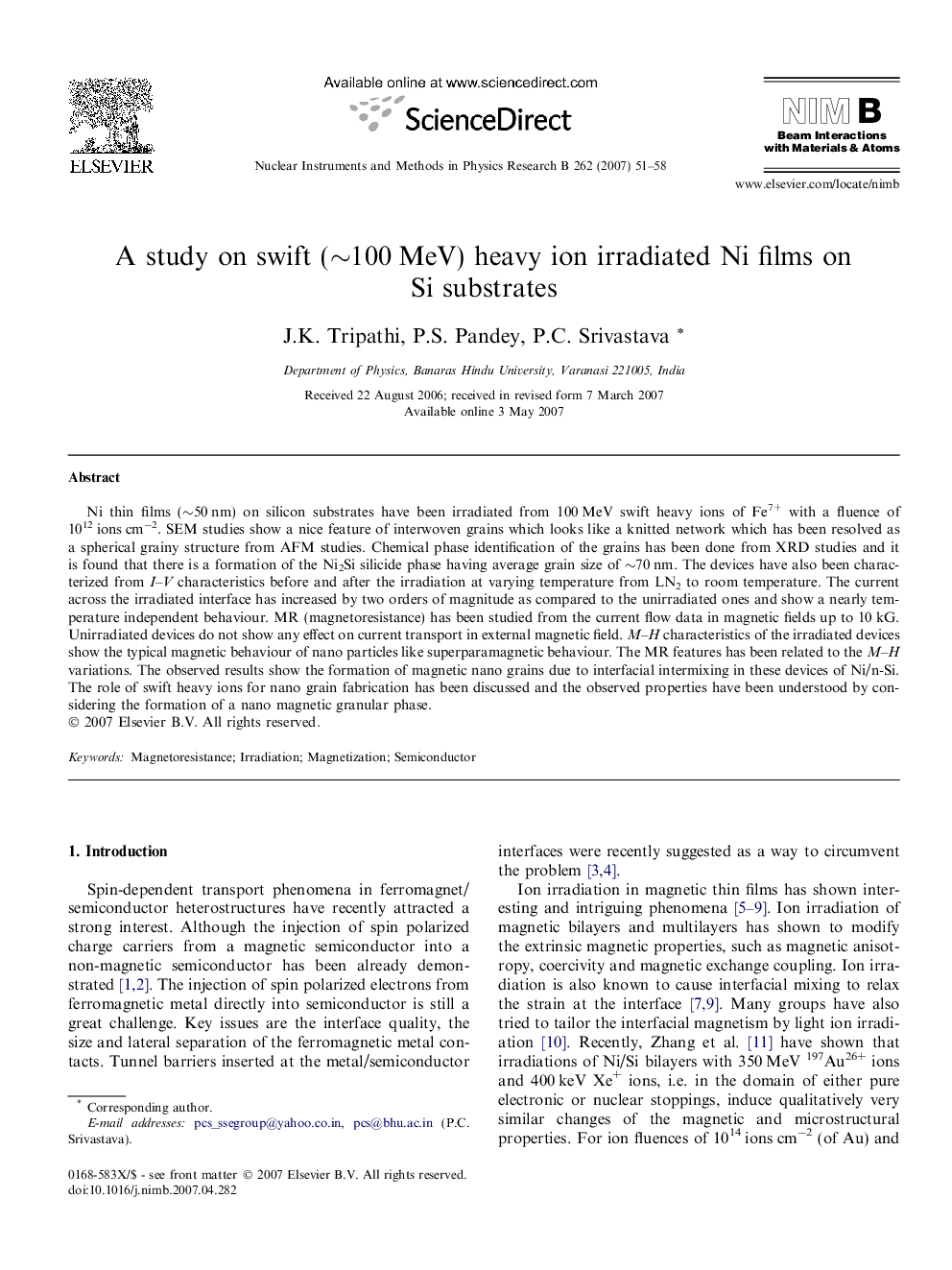| کد مقاله | کد نشریه | سال انتشار | مقاله انگلیسی | نسخه تمام متن |
|---|---|---|---|---|
| 1686654 | 1010608 | 2007 | 8 صفحه PDF | دانلود رایگان |

Ni thin films (∼50 nm) on silicon substrates have been irradiated from 100 MeV swift heavy ions of Fe7+ with a fluence of 1012 ions cm−2. SEM studies show a nice feature of interwoven grains which looks like a knitted network which has been resolved as a spherical grainy structure from AFM studies. Chemical phase identification of the grains has been done from XRD studies and it is found that there is a formation of the Ni2Si silicide phase having average grain size of ∼70 nm. The devices have also been characterized from I–V characteristics before and after the irradiation at varying temperature from LN2 to room temperature. The current across the irradiated interface has increased by two orders of magnitude as compared to the unirradiated ones and show a nearly temperature independent behaviour. MR (magnetoresistance) has been studied from the current flow data in magnetic fields up to 10 kG. Unirradiated devices do not show any effect on current transport in external magnetic field. M–H characteristics of the irradiated devices show the typical magnetic behaviour of nano particles like superparamagnetic behaviour. The MR features has been related to the M–H variations. The observed results show the formation of magnetic nano grains due to interfacial intermixing in these devices of Ni/n-Si. The role of swift heavy ions for nano grain fabrication has been discussed and the observed properties have been understood by considering the formation of a nano magnetic granular phase.
Journal: Nuclear Instruments and Methods in Physics Research Section B: Beam Interactions with Materials and Atoms - Volume 262, Issue 1, August 2007, Pages 51–58